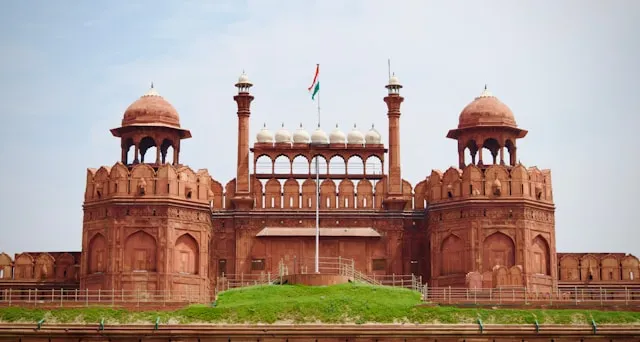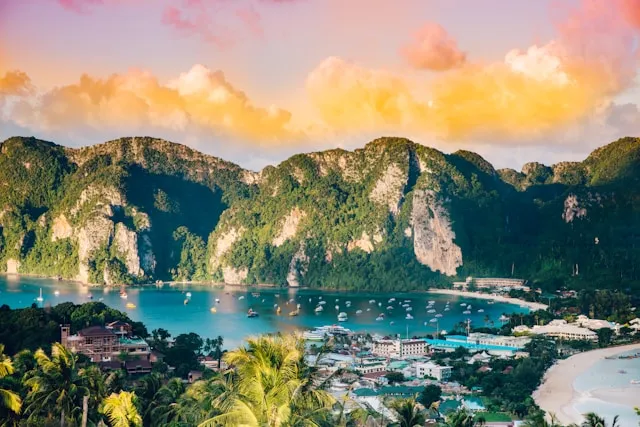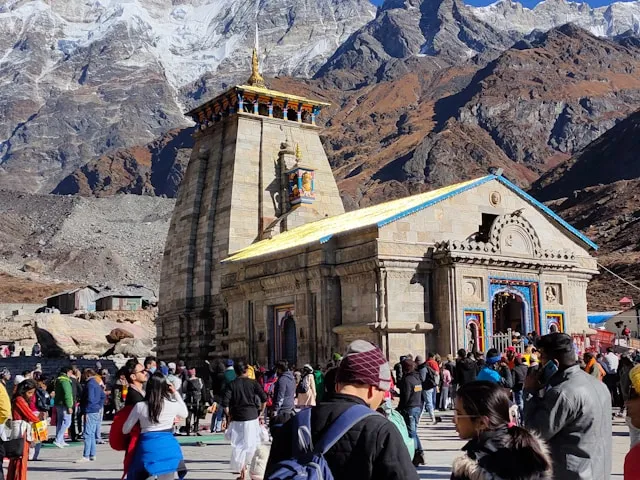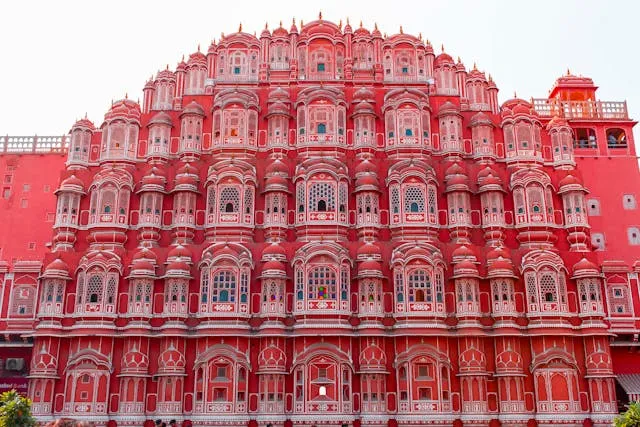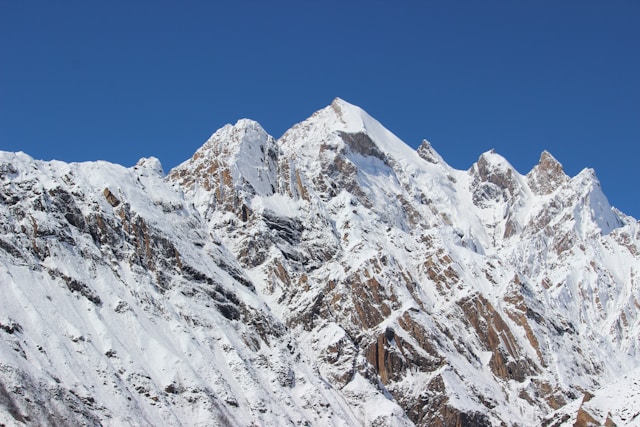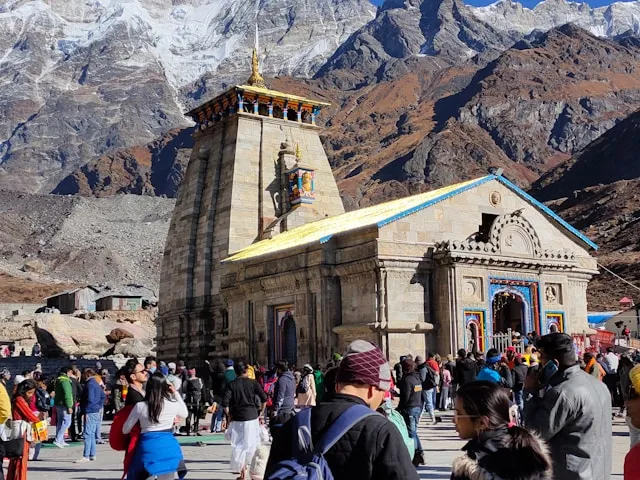Badrinath Temple Travel Guide
Badrinath Temple
About Badrinath Temple Travel Guide
Destination Overview – Badrinath Temple
Badrinath Temple, located in the scenic town of Badrinath in Uttarakhand, is one of the most important pilgrimage sites in India. Dedicated to Lord Vishnu, it is one of the four sacred Char Dham pilgrimage destinations and holds immense spiritual significance for Hindus. Nestled in the Garhwal Himalayas at an altitude of about 3,133 meters, the temple is surrounded by breathtaking snow-capped peaks and the Alaknanda River. The temple’s rich history, stunning natural setting, and vibrant religious atmosphere attract thousands of devotees every year seeking divine blessings and spiritual upliftment.
Top Attractions & Places to Visit – Badrinath Temple
Badrinath Temple Shrine: The sacred abode of Lord Vishnu with intricate architecture.
Tapt Kund: Natural hot springs believed to have healing powers.
Mata Murti Temple: Dedicated to the mother of Lord Badrinath.
Neelkanth Peak: A majestic mountain visible from the temple town.
Nearby Attractions: Mana Village, the last Indian village before the Indo-Tibetan border.
Best Time to Visit – Badrinath Temple
The temple is open from late April to early November, during the summer months when the weather is favorable and the route is accessible. Winters bring heavy snowfall, and the temple remains closed from November to April. Peak pilgrimage months include May to June and September to October.
How to Reach – Badrinath Temple
Air: Jolly Grant Airport in Dehradun is the nearest airport, approximately 317 km away.
Rail: Rishikesh and Haridwar are the closest major railway stations.
Road: Regular bus and taxi services connect Rishikesh, Haridwar, and Dehradun to Badrinath.
Trekking: The road leads up to the temple town; no major trekking is required for the main shrine.
Accessibility for Differently-Abled Travelers – Badrinath Temple
The temple and its surrounding areas offer basic accessibility facilities, but due to the mountainous terrain, some parts may be challenging. Efforts are underway to improve infrastructure for differently-abled pilgrims.
Things to Do & Experiences – Badrinath Temple
Attend the daily rituals and aarti at the temple.
Take a dip in the sacred Tapt Kund hot springs.
Explore the nearby Mana Village and learn about local culture and mythology.
Enjoy panoramic views of the Himalayas including Neelkanth Peak.
Participate in festivals such as Mata Murti Ka Mela and Badri-Kedar Utsav.
Accommodation Options – Badrinath Temple
Badrinath offers various accommodations ranging from simple guesthouses and dharamshalas to mid-range hotels. Early booking during peak seasons is advisable due to high pilgrim influx.
Local Cuisine & Dining – Badrinath Temple
Vegetarian cuisine predominates with traditional Garhwali dishes such as aloo ke gutke and rajma chawal served in local eateries. Many pilgrims prefer simple meals suited for trekking and spiritual activities.
Travel Tips & Safety – Badrinath Temple
Acclimatize properly to avoid altitude sickness.
Carry warm clothing regardless of the season.
Follow temple rules and maintain decorum.
Stay hydrated and carry essential medicines.
Use authorized transport and guides for safe travel.
Weather Details & Packing Suggestions – Badrinath Temple
Summer: Light woolens and layered clothing for cool mountain weather.
Monsoon: Rain gear is necessary; be cautious of landslides.
Winter: Heavy woolens, thermals, and warm accessories (temple closed in winter).
General: Comfortable trekking shoes, sunglasses, and sunscreen recommended.
Currency Exchange & Banking Facilities – Badrinath Temple
ATMs and currency exchange services are limited but available in Badrinath town. Carry sufficient cash, especially for remote areas.
Connectivity & SIM Card Info – Badrinath Temple
Mobile network coverage is moderate with providers like Jio and Airtel having signals. WiFi availability is limited, mainly in hotels and guesthouses.
Itinerary Suggestions – Badrinath Temple
1-Day: Visit the temple, Tapt Kund, and Mata Murti Temple.
2-Days: Explore Mana Village and nearby natural attractions along with temple rituals.
3-Days: Combine with a trip to Hemkund Sahib or other nearby pilgrimage spots.
Nearby Destinations to Explore – Badrinath Temple
Mana Village: Explore the rich cultural heritage and myths of India’s last village.
Hemkund Sahib: A sacred Sikh pilgrimage site accessible by trek from Govindghat.
Joshimath: A gateway to various Himalayan treks and temples.
Shopping & Souvenirs – Badrinath Temple
Pick up religious artifacts, woolens, handicrafts, and local spices from markets in Badrinath and Mana Village.
Cultural & Historical Background – Badrinath Temple
The temple’s origins are linked to ancient Hindu scriptures and mythologies. Believed to be established by Adi Shankaracharya in the 8th century, it has stood as a symbol of devotion to Lord Vishnu and spiritual harmony amidst the Himalayas.
Best Transport Options – Badrinath Temple
Shared taxis, buses, and private cabs are commonly used to reach Badrinath. The well-maintained roads make it accessible by vehicles without extensive trekking.
Nearest Railway Station – Badrinath Temple
Haridwar and Rishikesh are the nearest railway stations providing connectivity to Badrinath.
FAQs About Badrinath Temple
When is Badrinath Temple open for visitors?
From late April to early November each year.
Is the temple accessible for elderly pilgrims?
Yes, the temple is reachable by road with minimal trekking.
What is the significance of the hot springs?
Tapt Kund’s hot springs are believed to have healing properties and purify pilgrims.
Are there accommodation facilities near the temple?
Yes, a variety of guesthouses and hotels are available in Badrinath town.
Is mobile network available at Badrinath?
Yes, coverage is moderate; some areas may have limited signal.
Sustainability & Responsible Tourism – Badrinath Temple
Pilgrims are encouraged to respect the fragile Himalayan ecosystem by minimizing waste, avoiding plastic, and supporting local businesses to promote eco-friendly tourism practices.
Need a Badrinath Temple Travel Guide Customized Itinerary?
Let us create your perfect Badrinath Temple Travel Guide journey

Gallery

Weather
Location Map
Badrinath Temple
Latest Blog Posts
Latest News: Badrinath Temple | Badrinath Temple Travel Guide 2026 | Route, Best Time, Tips & Stay 2026
What Our Travelers Say
Real experiences from our valued customers
"Our Thailand trip was amazing! We explored Bangkok, enjoyed the beaches of Phuket, and experienced local culture. The tour was well-organized and stress-free!"
Sunita Mehta (Kolkata, India)
"The Somnath Darshan trip was incredible! Great accommodations, fantastic guides, and an overall peaceful experience."
Arun Mehta (Gurgaon, India)
"Kedarnath was simply breathtaking. A beautiful, well-organized journey. It exceeded all my expectations."
James Foster (Vancouver, Canada)
"Our pilgrimage to the Sabarimala temple was filled with peace and grace. I couldn’t have asked for a better journey."
Amit Choudhury (Mumbai, India)
"The Kedarnath Yatra was a divine experience. Everything was arranged smoothly, making the journey peaceful and memorable. Highly recommend!"
Ravi Patel (Ahmedabad, India)
"Nepal’s natural beauty and sacred temples made this trip unforgettable. The team handled everything perfectly, and we felt well taken care of throughout."

